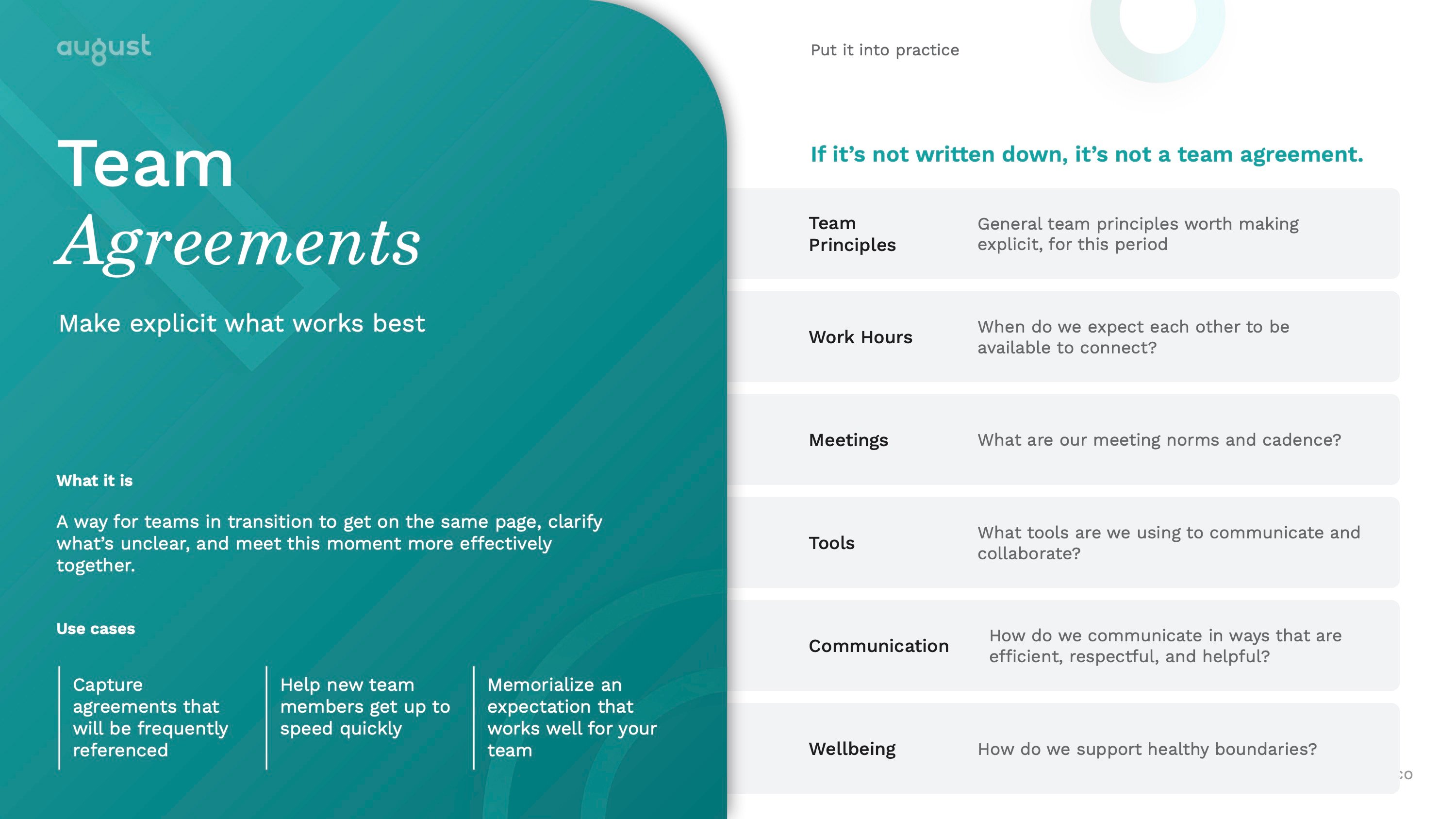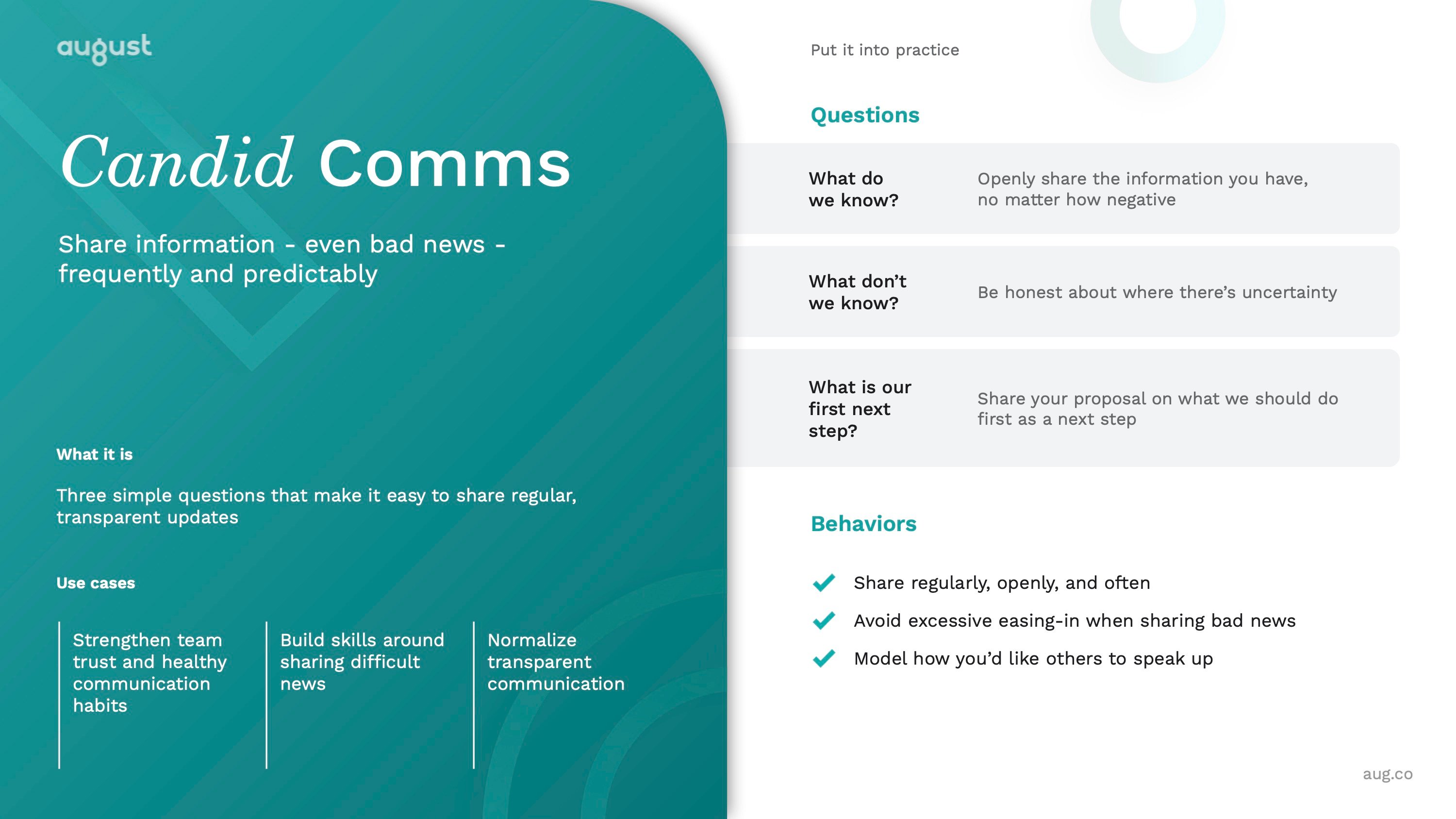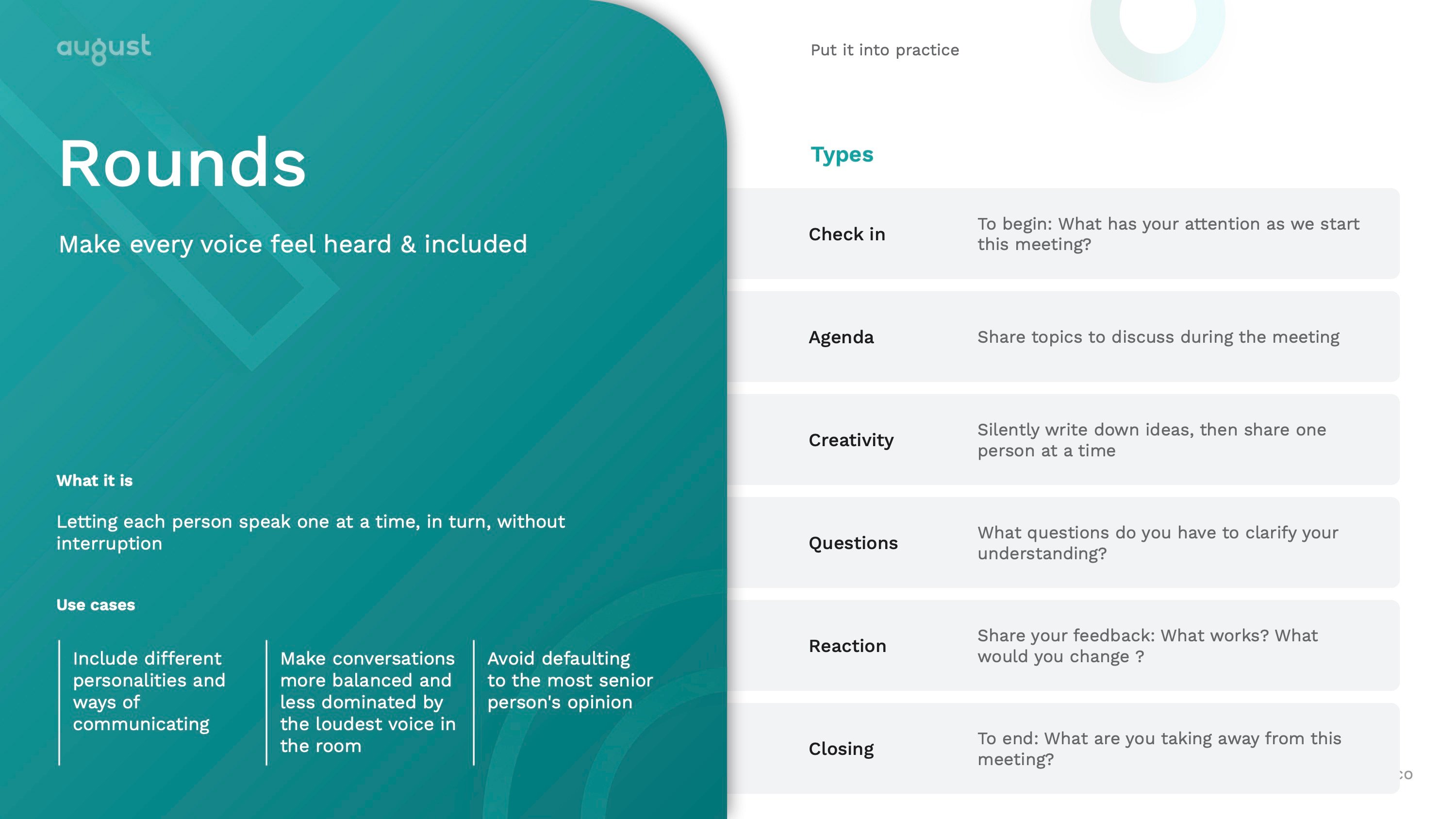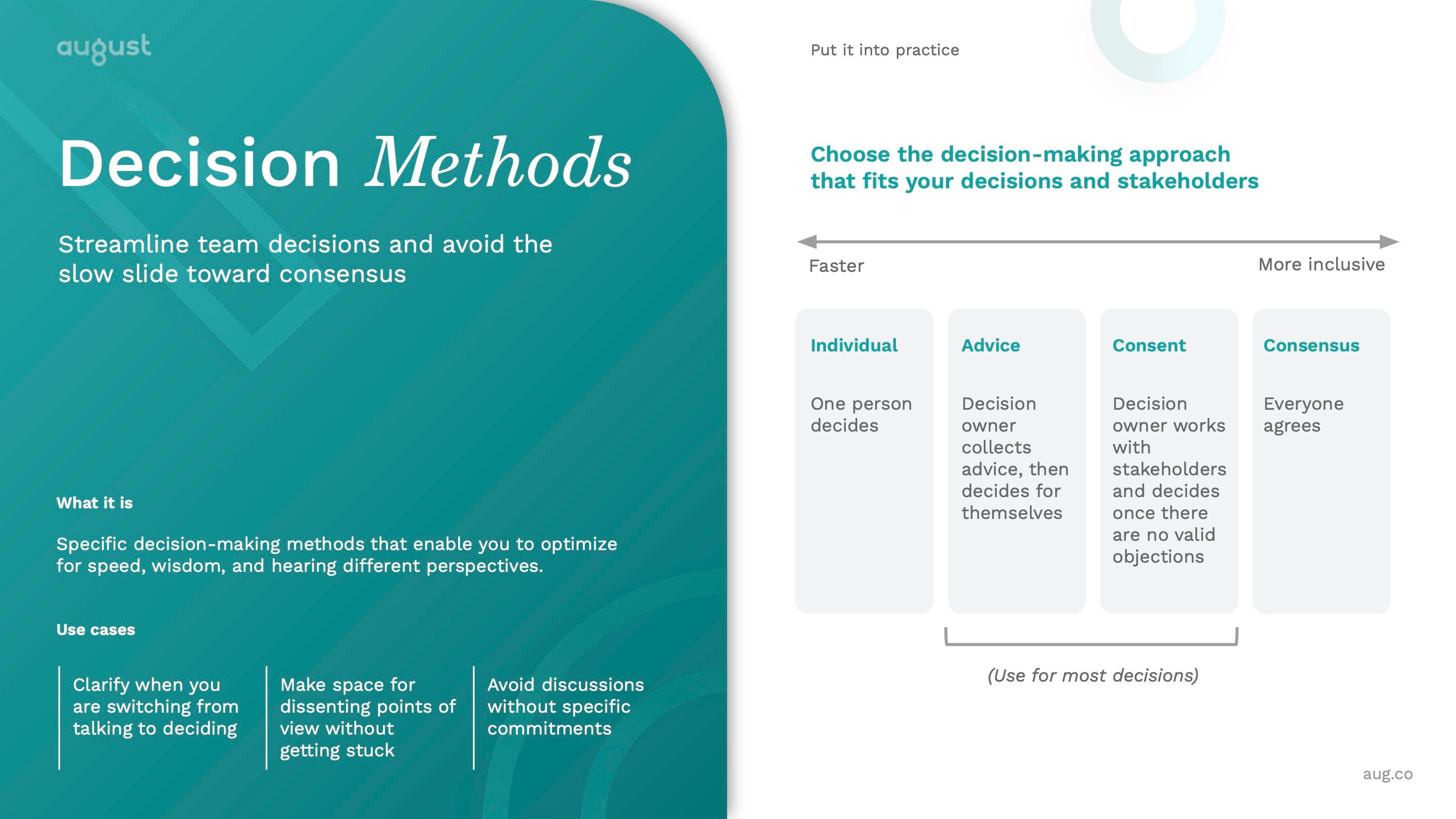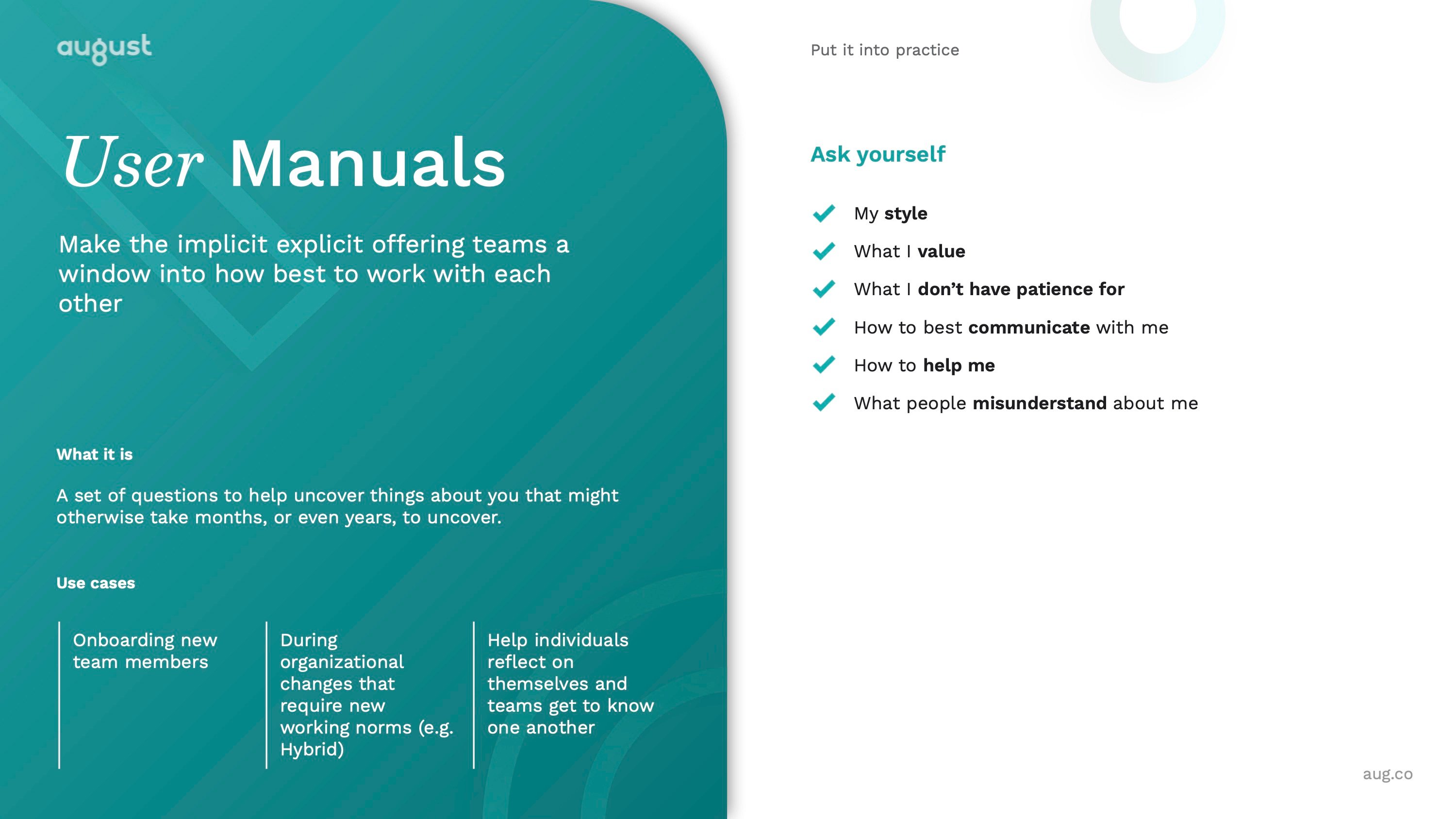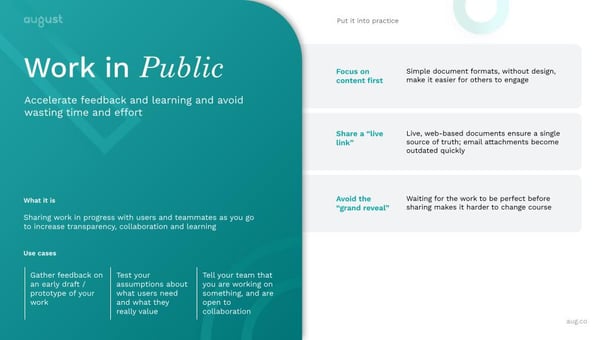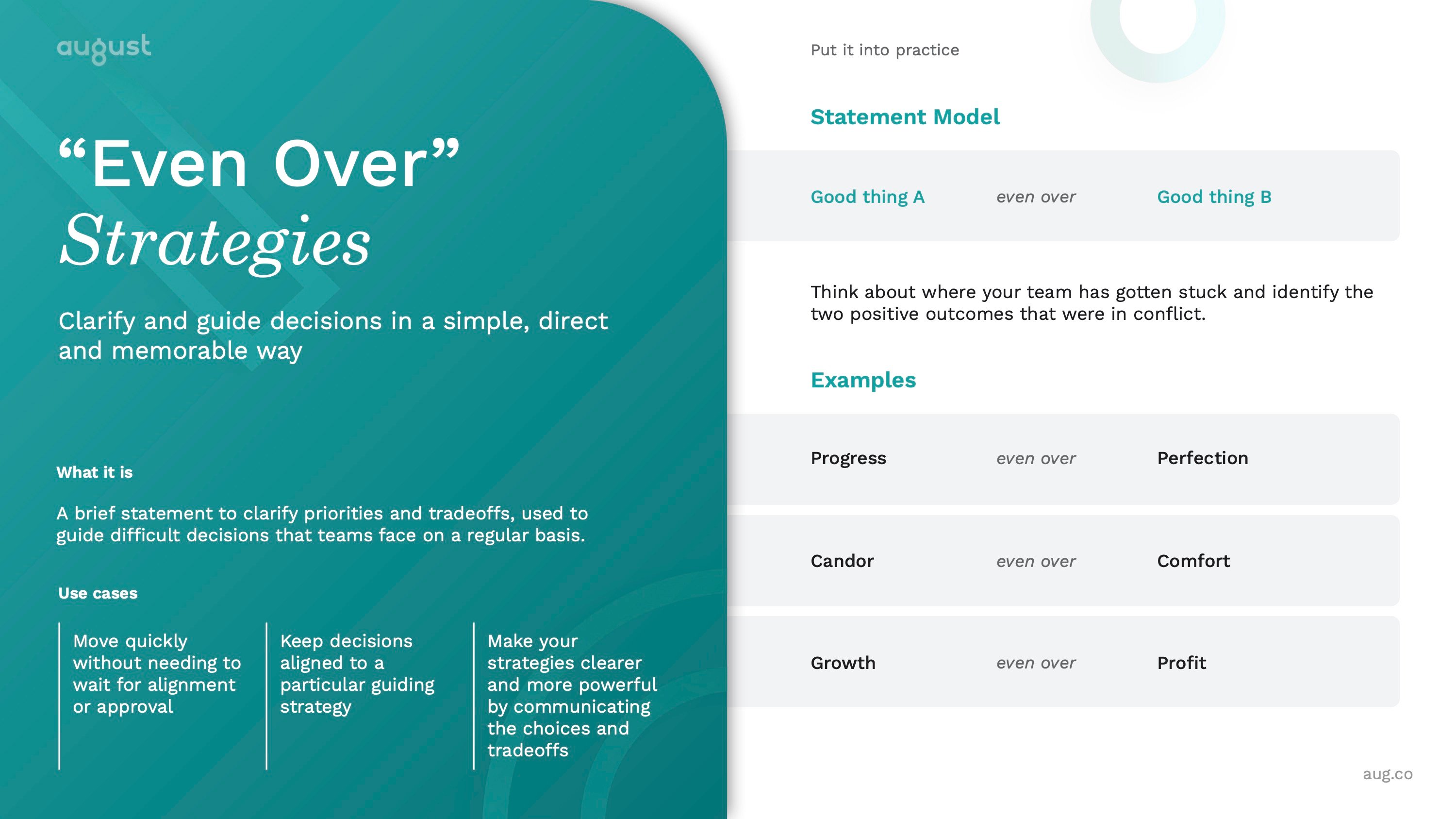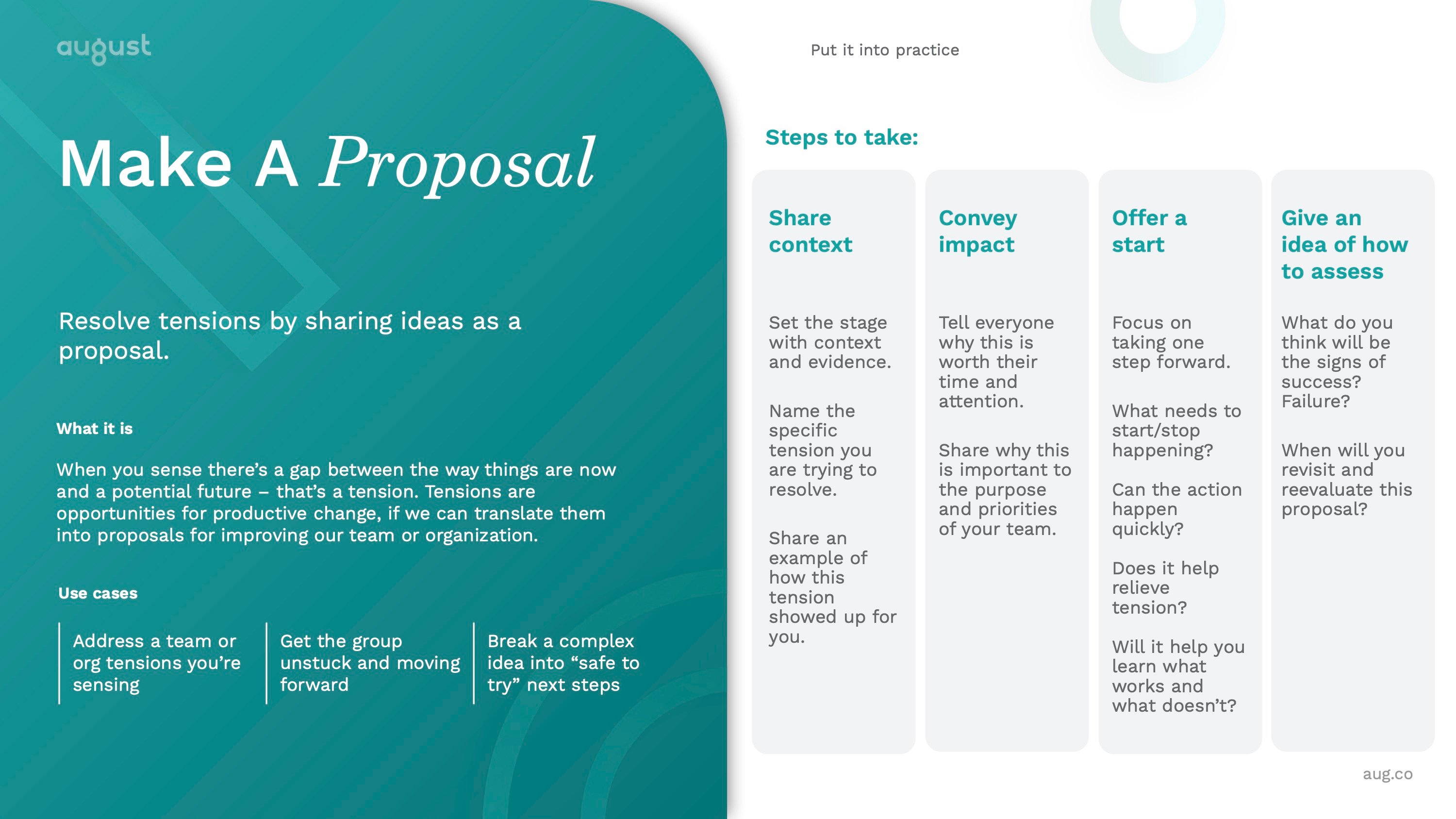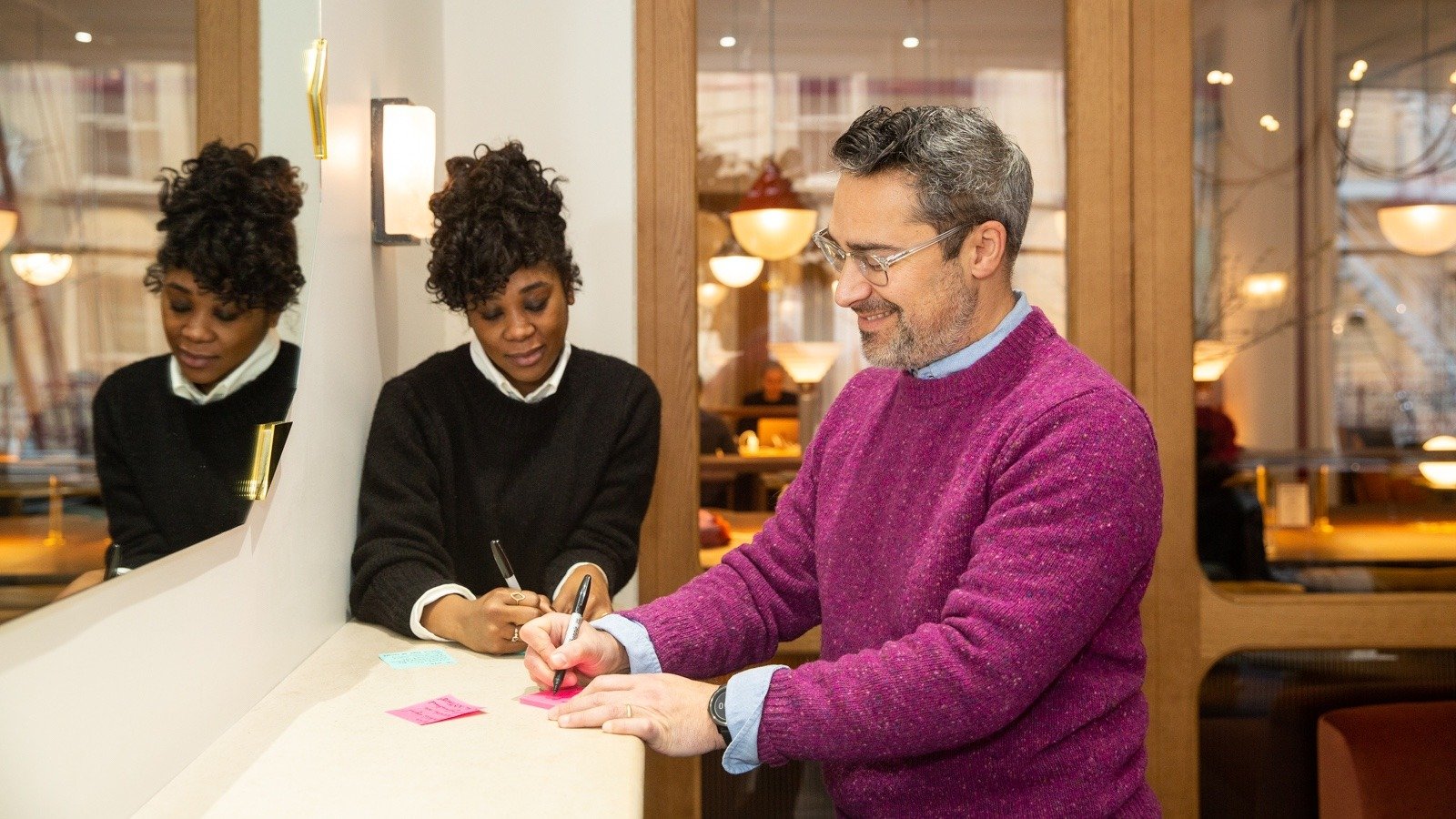Published March 5, 2024 | Updated October 8, 2024 | 10 minute read
When people think of building organizational trust, the first things that come to mind are usually trust falls, team building games, and sharing fun facts around a Zoom call.
While these are indeed ways to build a strong team foundation (there is nothing we love more than a good check-in question at August), our trust-building work with client partners has taught us that trust is about so much more.
Trust isn't about one big bonding moment or learning a teammates’ favorite toothpaste flavor. Nor is it simply about feelings, culture, or “vibe.” Meaningful, resilient organizational trust is a complex structural dynamic that emerges and grows in response to small, everyday behaviors.
We often cite the quote "Trust is built in teaspoons and lost in buckets." Our work focuses on all of the teaspoons – the small, practical behaviors – that can help build trust into the very fabric of the organization.
These behaviors aren’t purely focused on building rapport or fostering empathy – although these are very important components of trust. But our research and work has shown us, they’re not the whole package.
To get a deeper understanding of exactly what comprises trust, we studied the work of Frances Frei and Anne Morriss, David Maister, Charles Feltman, and models like Edelman’s Trust Barometer and the Center for Creative Leadership’s 3 Dimensions of Trust.
From these and more, we've distilled organizational trust into four essential components, or cornerstones: Reliability, Empathy, Authenticity, and Logic (REAL).
These components are often packaged or worded differently depending on which model you subscribe to – but every model can be broken down into a version of this quadriad.
None of these cornerstones can build and sustain trust on their own. Individuals and organizations need a healthy balance of all four together in order to realize the immense business benefits of organizational trust.
Below is a breakdown of each Trust-Building Cornerstone, and a few simple “teaspoon” practices you can use to build it within your teams.
Trust-Building Cornerstone #1: Reliability
Reliability is doing what you say you will do, and being consistent in your words and actions. For leaders, it’s speaking and behaving in alignment with the organization’s values, so that your movements are consistent and predictable.
Reliability can only be demonstrated over time. It’s built through repeated behaviors and established patterns that teach people the specific ways they can depend on you.
When you follow through in a reliable way, people learn to trust you with increasingly important tasks. This builds the organization's capacity for innovation and growth as a whole.
Reliability Trust-Building Practices
Team Agreements
Team agreements help everyone get on the same page about who is doing what. This establishes explicit expectations for what team members can rely on each other for. As we like to say at August, this makes the implicit, explicit.
Candid Comms
Candid communication enables team members to be explicit about what they know, what they don’t know, and when they can commit to getting more information. This sets an expectation that people will share information, even bad news, frequently and predictably, so there are no surprises.
Trust-Building Cornerstone #2: Empathy
Empathy is more than simply caring about others and sympathizing with their feelings. These are important foundational aspects of empathy, and can be practiced through active listening and compassionate check-ins – but they’re not the whole picture.
There are more concrete and elevated ways you can demonstrate empathy in the workplace; for example, by genuinely seeking the ideas and expertise of others; showing that you value others by integrating those ideas in concrete, visible ways; delegating decision-making power to people close to the work; and investing time and energy in helping others succeed.
All of these practices are powerful ways to manifest empathy within the work itself, rather than saving it for social interactions alone.
Empathy Trust-Building Practices
Rounds
Rounds are a meeting practice that ensures equitable speaking time for all voices at the table. This builds trust by making space for surprising, dissenting, and underrepresented points of view.
The check-in round is an especially important way to build empathy because it gives everyone an equal chance to share what else is on their minds. This allows team members to be more present with their colleagues by “emptying their cup” at the start of a meeting.
Decision Methods
Build trust by making your decision-making process intentional and explicit. Don’t just default to individual authority or consensus without considering other models, like Consent and Advice, that allow for more voices to be heard in a meaningful, impactful way. Involving others in the decision making processes is a way to demonstrate empathy.
Trust-Building Cornerstone #3: Authenticity
Authenticity is a practice of allowing your genuine thoughts, feelings, ideas and processes to be seen, even when messy. This takes a lot of vulnerability and courage! But authenticity allows us to do this in an empowered, candid way.
One way to be authentic is to share about ourselves more deeply– what we value, what we struggle with, what we hope for, and more. This helps people feel like they are getting to know the “real us.”
Another form of authenticity is openly sharing our ideas and works in progress. This is a tough one! It’s not easy to let ourselves be seen as imperfect. But we can build trust by inviting people into our process. This allows us to release the pressure to maintain a “perfect” professional veneer, and instead lean into genuine collaboration with our teams.
Lastly, authenticity can show up as being transparent and truthful. Team members want straight answers to reasonable questions, and they want to be informed on matters that impact them. We can build trust by sharing decisions and tradeoffs openly, rather than obfuscating for fear of upsetting people. Bad news delivered clearly is always preferable to rumors in the dark.
Authenticity Trust-Building Practices
User Manuals
A user manual is an intentional way to share who you really are with your team. This goes deeper than small talk or icebreaker games, to reveal what you value, how you communicate, and what makes you tick.
Work In Public
We all know that great solutions don’t drop fully formed from the sky. Yet most of us are conditioned to pretend like they do! Conventional professionalism teaches us to hide our early drafts and half-baked ideas, and to only share once we have a polished final product.
Working in public releases us from this fear and mistrust. It allows us to drop the shield of perfectionism, and instead invite people into our processes and allow them to influence our work. It’s an amazing way to build trust through genuine connection and collaboration.
Trust-Building Cornerstone #4: Logic
Logic is about expertise and communication. Trusted leaders and team members not only understand their work, but are excellent at communicating it to others. They convey complex information in a way that is easy to follow, intuitive, and sensible. They set clear expectations that align with larger goals. They help everyone see the big picture, and their own individual role within it.
Speaking clearly is one of the most effective ways to win peoples’ trust. It doesn’t matter if you have a genius vision and a foolproof plan for realizing it – if you can’t convey it clearly to others, trust in you and your plan will erode no matter how good it is.
Logic Trust-Building Practices
"Even Over" Strategies
An “even over” helps get everyone on the same page about the priorities and tradeoffs that inform a given decision. This helps you build trust in the logic behind an action, even if people disagree.
Make a Proposal
Making a proposal is a way of communicating a plan and outlining your reasoning in a collaborative fashion that allows others to contribute. It’s a great way to build peoples’ trust in the logic of the final choice.
Conclusion
Trust is a complex web of interdependent relationships and practices within an organization. Building it requires attention to the four cornerstones of trust, individually and collectively.
The good news is that the practices for building trust will cross-pollinate across multiple cornerstones. The four components of trust don’t grow in isolation; they support and reinforce each other. The more you cultivate your weakest components, the more your stronger components will connect and interlock with those efforts, building up a stable foundation of trust that will deepen and grow with every new effort.


-1.jpg)

